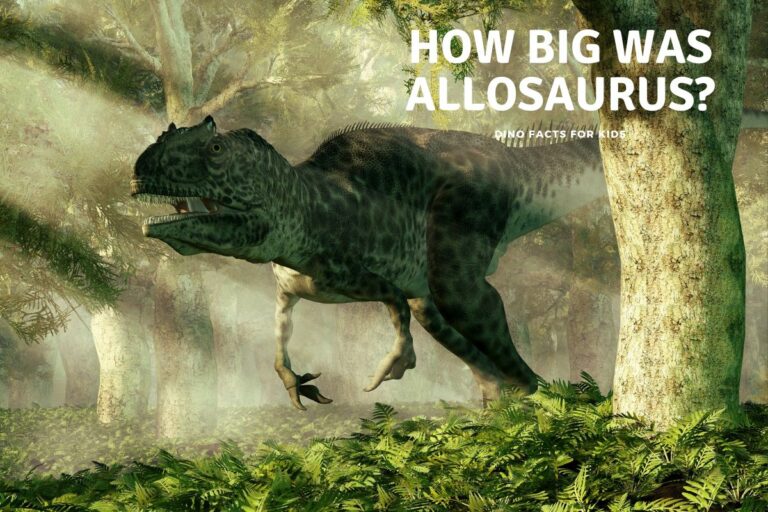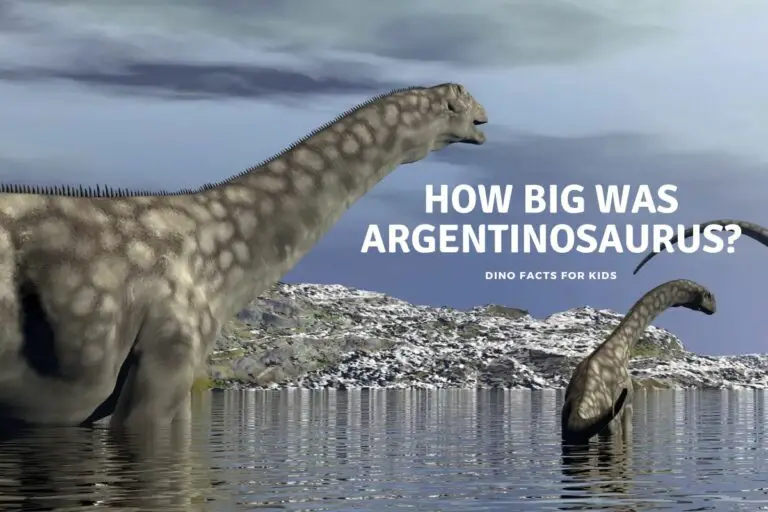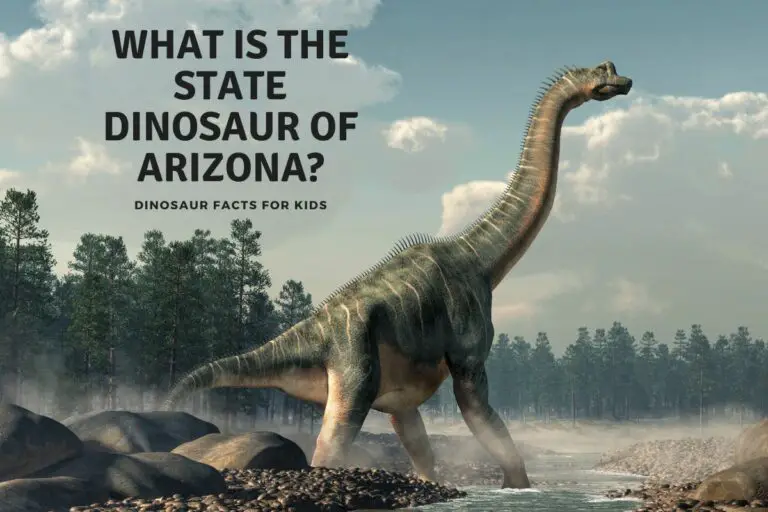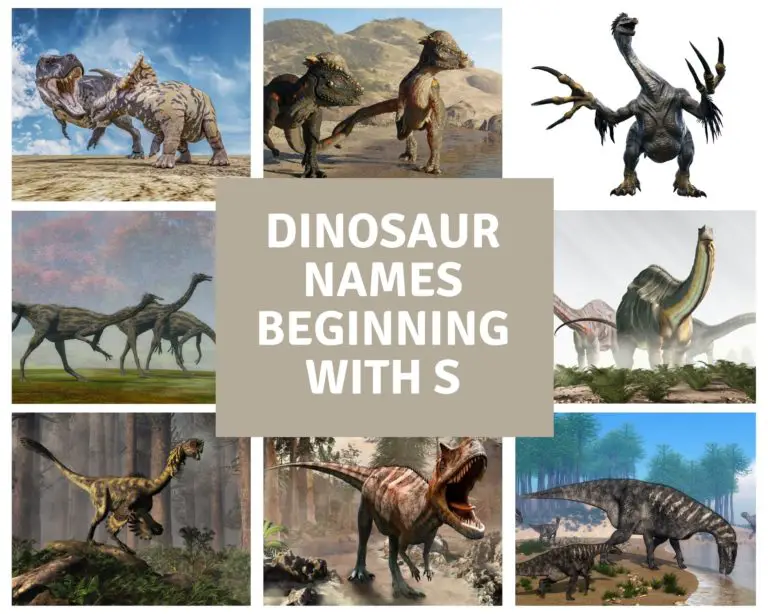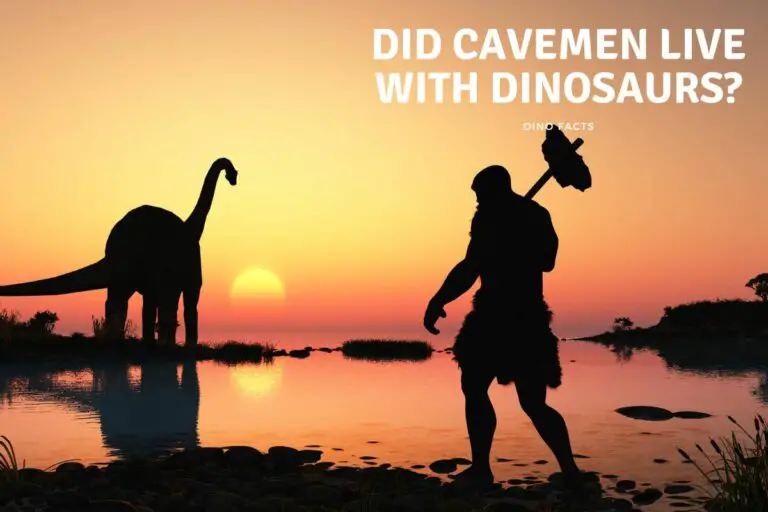How Much Did Brachiosaurus Eat
The Brachiosaurus, with its towering neck and immense size, and fame from the Jurassic Park and World films, is one of the most iconic dinosaurs. It lived, outside of those movies, during the Late Jurassic period and with such size came a large appetite. We take a look at how much did the Brachiosaurus Eat here.
The Brachiosaurus, one of the largest dinosaurs, consumed an estimated 400 to 880 pounds (180 to 400 kg) of vegetation daily. This vegetation consisted primarily of ginkgo, conifer and ferns and its constant grazing was essential for its survival.
We take a longer look at the diet of the Brachiosaurus below and look to understand its feeding habits, how much food it ate compared to modern items and the impact of its diet on its surrounding environment.
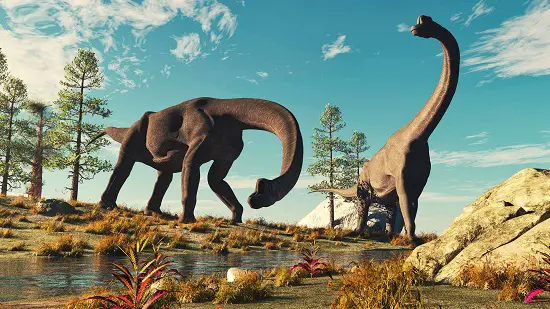
How Did Brachiosaurus Feed?
The Brachiosaurus grew up to 85 feet in length and could weigh up to an estimated 46+ tons, ( though this has been argued for many years – more here on how big a brachiosaurus was) its most distinctive feature was its long neck, which could reach heights of over 30 feet.
This neck allowed the Brachiosaurus to access treetop foliage inaccessible to other herbivores, in that area at least!
Its peg-like teeth were adept at stripping leaves but not for chewing. Instead, it is believed they swallowed gastroliths (small stones) which helped grind the plant material inside their stomachs.
This internal ‘grinding machine’ allowed them to process vast amounts of vegetation efficiently, just how much brachiosaurus ate we take a look at below.
How Much Did The Brachiosaurus Eat
Understanding the dietary needs and how much it ate, of a creature that hasn’t roamed the Earth for millions of years is no easy task.
However, through comparisons with animals alive today and studying the Brachiosaurus’s anatomy, we can make educated guesses.
Based on its colossal size, a Brachiosaurus may have consumed between 400 to 880 pounds (180 to 400 kg) of vegetation daily.
But what does that actually mean?
Imagine consuming more than 2,000 heads of lettuce daily or stripping down a small tree’s worth of leaves every day.
Comparing this with modern-day large herbivores (as we do in the table below) provides a little more understanding.
For example, an adult African elephant, one of today’s largest land herbivores, consumes about 300 to 400 pounds of food daily.
But given the Brachiosaurus’s significantly greater size, their intake would have been greater than that of the elephant. Elephants consume about 4-7% of their body weight in food daily.
Applying this percentage to the Brachiosaurus, which weighed up to 45 tons, its daily intake would be at the higher end of our estimate.
However, an essential factor to consider is metabolism. Dinosaurs like the Brachiosaurus possibly had a slower metabolic rate than today’s endothermic mammals.
Being ectothermic (or somewhere in between ectothermic and endothermic), they might not have needed to eat as frequently as mammals, but still the sheer volume required when they did feed would be staggering.
The nature of their food is another consideration. The high-growing foliage, like conifers and ferns, would be fibrous and tougher to digest than many plants today, requiring more prolonged processing in their digestive tracts.
The Brachiosaurus’s method of swallowing gastroliths further supports this theory, as these stones would aid in breaking down these tougher plant materials in their stomachs.
Brachiosaurus Daily Intake Comparison Table
First, a few baselines to make sure we are as accurate as can be.
- A head of lettuce typically weighs about half a pound (0.23 kg).
- A large bale of hay can weigh around 100 pounds (45.3 kg).
- An African elephant consumes about 200 to 600 pounds (90.7 to 272 kg) of food daily.
- A bowl of salad might weigh around 0.5 pounds (0.23 kg) on average.
- A bag of spinach is typically around 0.5 pounds (0.23 kg).
- A giraffe consumes about 20 to 30 pounds (9 to 13.6 kg) of leaves and twigs daily.
- A stalk of broccoli weighs about 0.5 pounds (0.23 kg) on average.
- A banana weighs about 0.3 pounds (0.14 kg).
- A loaf of whole grain bread weighs about 1 pound (0.45 kg).
Using these baselines and the estimated 400 to 880 pounds (180 to 400 kg) of vegetation daily consumption for Brachiosaurus:
| Item/Animal | Equivalent to Brachiosaurus Daily Intake |
|---|---|
| Heads of Lettuce | Approx. 800 – 1,760 heads |
| Large Bales of Hay | About 4 – 8.8 bales |
| African Elephant’s Daily Diet | 2/3 – 1.5 times an elephant’s daily intake |
| Bowls of Salad | Approx. 800 – 1,760 bowls |
| Bags of Spinach | About 800 – 1,760 bags |
| Giraffe’s Daily Diet | 13 – 44 times a giraffe’s daily intake |
| Stalks of Broccoli | Approx. 800 – 1,760 stalks |
| Bananas | Around 1,333 – 2,933 bananas |
| Loaves of Whole Grain Bread | About 400 – 880 loaves |

What did Brachiosaurus Eat?
Brachiosaurus was a specialized herbivore eating solely plants. Fossil evidence indicates it ate conifers, ginkgo, and ferns and had a preference for high-growing foliage. Gingko trees are still found today and are around 200 million years old.
Their long necks made them perfectly suited for feeding on tree canopies, which provided them with both the quantity and variety of vegetation needed to sustain those enormous bodies.
Unlike ground-level feeders, Brachiosaurus, using that long neck, could browse vast areas without having to move as much, conserving energy.
Their diet may have occasionally included fruits and softer plants when available – we all love something a little sugary and sweet!
Why the Brachiosaurus Ate So Much
The Brachiosaurus was a giant, weighing up to 50 tons, and with such a massive body came a massive appetite. Simply put, big animals need a lot of energy.
To keep its heart pumping, muscles moving, and body functioning, the Brachiosaurus had to consume vast quantities of food daily.
While its metabolism might have been slower than modern warm-blooded creatures, its sheer size demanded a substantial amount of calories.
It’s like how a truck needs more fuel than a car to keep running. The Brachiosaurus grazed almost constantly, not out of habit, but out of necessity.
Every bite was essential to meet its daily energy requirements and stay healthy.
Brachiosaurus Role in the Ecosystem
The Brachiosaurus, with its massive appetite, played a vital role in its ecosystem. As primary consumers of vegetation, they helped regulate plant populations, preventing overgrowth and maintaining a balance.
Their feeding habits likely created opportunities for other animals and plants, as they opened gaps in dense forest and jungle canopies, allowing sunlight to penetrate and encourage the growth of different types of plants.
Their droppings ( which would have been huge!) would have contributed significantly to the nutrient cycle, enriching the soil and promoting plant growth.
Additionally, their dung (dinosaur poop) would’ve provided a feast for various insects and microorganisms. Just as elephant dung today supports various African ecosystems,
As a prey species, despite their size, they provided sustenance for large carnivorous dinosaurs, indirectly influencing predator populations be they hunted or scavenged.
Brachiosaurus and Modern Herbivores
Modern large herbivores, like elephants and giraffes, can give us some idea of how important a Brachiosaurus may have been in their environment.
Elephants, similar to Brachiosaurus, shape their environments, creating clearings by knocking down trees, allowing sunlight to previously shaded areas and promoting plant growth through their feeding habits.
Giraffes, with their long necks, browse high tree canopies much like Brachiosaurus, acting as a check on certain plant populations and allowing others better conditions to grow.
However, while these modern animals consume large ( to us) amounts of vegetation, their food consumption is tiny when compared to a dinosaur the size of the Brachiosaurus.
These comparisons provide us with a good baseline of the impact the Brachiosaurus would have had on its environment,
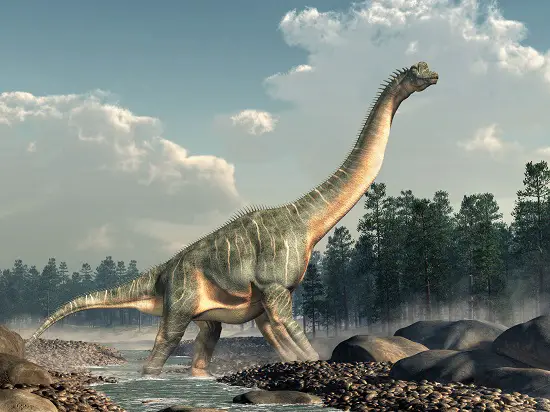
How Do we know Brachiosaurus Ate plants?
Brachiosaurus had several fascinating adaptations that show us it was indeed a herbivore and a very efficient one as well.
- Its long neck allowed it to reach vegetation unavailable to other dinosaurs.
- The broad, flat, spatulate teeth were not for chewing but for raking and stripping foliage.
- Once ingested, the plant material would reach a vast gut, (big tummy) where digestion took place over a long period, possibly up to three days. allowing the extraction of maximum nutrients.
- Their gut might have harbored microbes that helped break down tough fibrous plants, similar to the bacteria in cow stomachs.
- Additionally, the ingestion of gastroliths, or stomach stones, assisted in grinding the tough plant material, further aiding digestion.
These adaptations both show us and allowed the Brachiosaurus to eat and process the huge amounts of vegetation necessary for its survival.
Want to know how much other dinosaurs ate – we many eating habits of dinosaurs covered below.
- How much did a Triceratops eat?
- how much did a T-rex eat?
- How much did a Brachiosaurus eat?
- how much did Velociraptor eat?
- How much did Spinosaurus Eat?
- How much did Stegosaurus eat?
Conclusion
The Brachiosaurus was a truly impressive creature, not just in size but in its daily requirements. With a weight reaching up to 50 tons, it’s no surprise this dinosaur had a huge appetite.
Consuming between 400 to 880 pounds of vegetation daily, it was a constant grazer. Every bite it took was essential for its survival.
Beyond just its diet, its droppings played a vital role in the environment, enriching the soil and supporting various organisms.
A big dinosaur with a big appetite and even bigger…. well lets just leave that there!
- https://blog.paultonspark.co.uk/brachiosaurus/#:~:text=Brachiosaurus%20was%20a%20herbivorous%20dinosaur,other%20animals%20of%20its%20time.
- https://www.livescience.com/25024-brachiosaurus.html
- https://www.science.org/content/article/sauropods-grew-big-munching-superfoods-sturdy-beaks
Hi, I am Roy Ford a General Studies and English Teacher who has taught all over the world. What started as a fossil collection became a great way to teach, motivate and inspire students of all ages and all over the world about dinosaurs and from that and children’s love of dinosaurs came the site dinosaur facts for kids, a resource for all ages.

